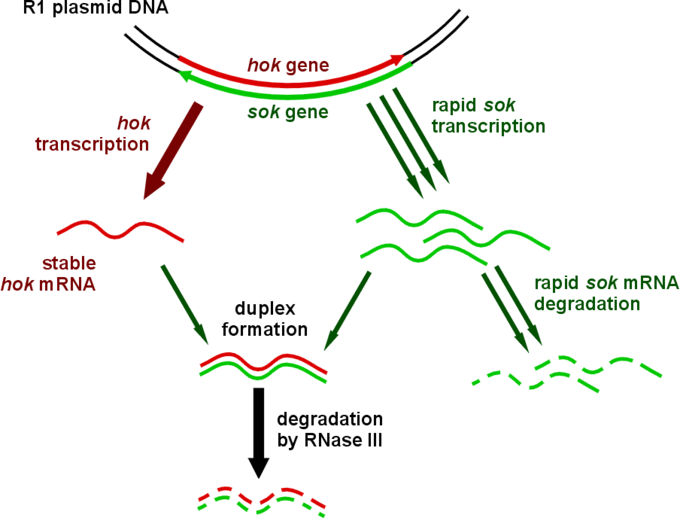Gene regulation, the ability to control whether a gene is expressed or not, is critical in controlling cellular and metabolic processes and contributes to diversity and variation in organisms. Furthermore, it is the key determinant in cellular differentiation and morphogenesis. There are specific types of RNA molecules that can be utilized to control gene regulation, including messenger RNAs (mRNAs), small RNAs such as microRNAs and lastly, antisense RNAs. The following is a brief overview of antisense RNAs and their role in RNA regulation. Antisense RNAs have been recently investigated as a new class of antiviral drugs.
Antisense RNAs are single-stranded RNA molecules that exhibit a complementary relationship to specific mRNAs. Antisense RNAs are utilized for gene regulation and specifically target mRNA molecules that are used for protein synthesis. The antisense RNA can physically pair and bind to the complementary mRNA, thus inhibiting the ability of the mRNA to be processed in the translation machinery. Pairing antisense RNA is a technique that can be utilized within the laboratory for gene regulation -- however, it is not without limitations. Naturally occurring antisense RNAs have been isolated in a various microbes, including the E. coli RI plasmid, which uses a hok/sok system. A hok/sok system is a mechanism employed by E. coli that is used as a postsegregational killing mechanism. The hok gene is a toxic gene and the sok gene is an antitoxin. Hence, E. coli utilizing this system can regulate the expression of hok (toxin) and inhibits its translation by producing sok RNA (antitoxin). The outcome is the repression of hok mRNA translation.

Hok/sok System
An example of a system found in nature that utilizes an antisense RNA to control gene regulation. The hok gene is a toxic gene that can be translationally repressed by the production of an antisense mRNA, sok (anti toxic).